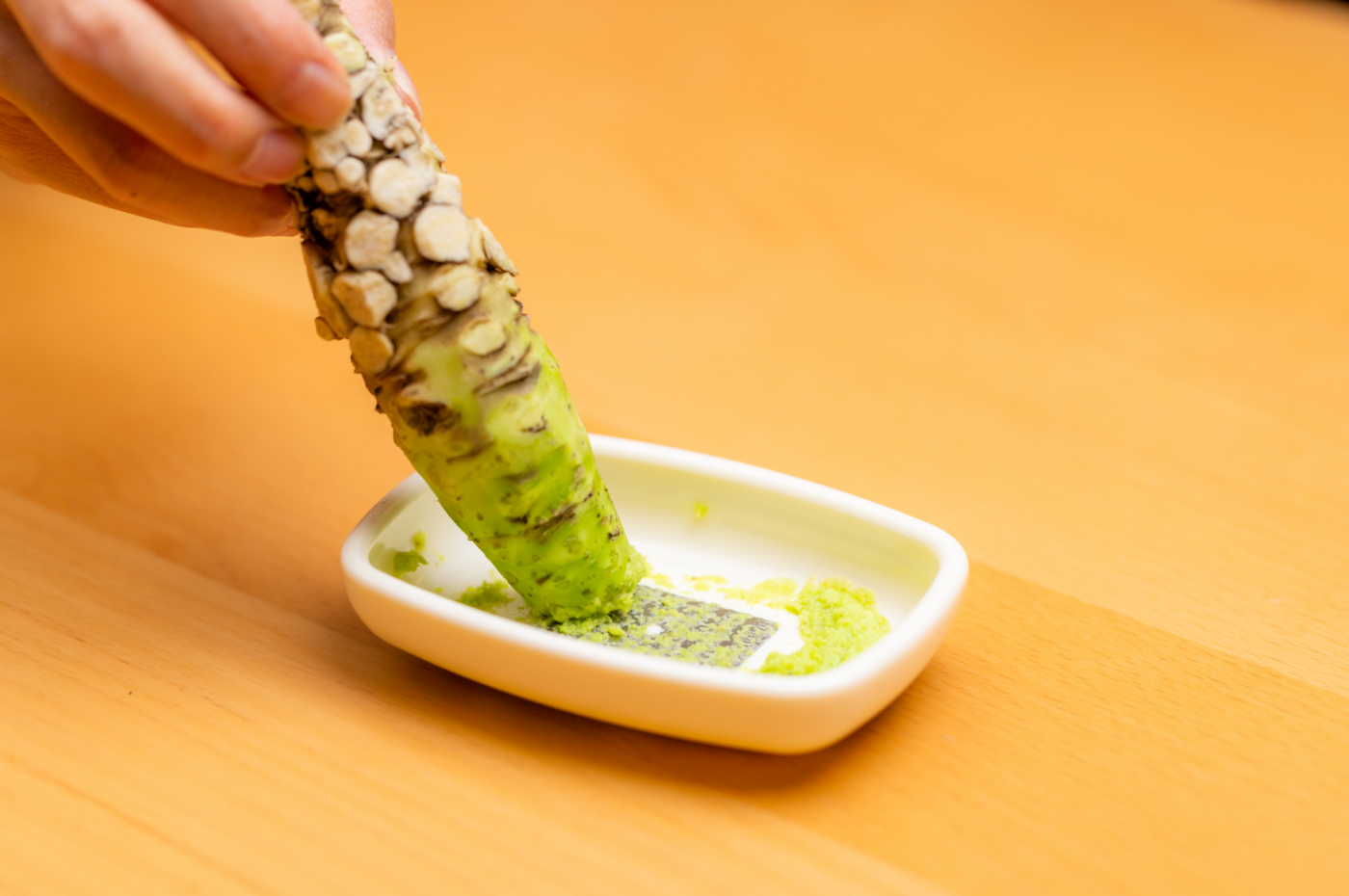Read More: History of Wasabi Root
The Enigmatic Wasabia Japonica
Wasabia japonica, a member of the Brassicaceae family (which also includes mustard, horseradish, and cabbage), is a plant native to Japan, Korea, and the Russian Far East. It thrives in cool, shaded environments, particularly along the banks of mountain streams. While its delicate, heart-shaped leaves and small, white flowers possess a certain charm, it is the plant’s underground structure that has captured the attention of culinary enthusiasts and scientists alike: the rhizome.
Rhizomes are modified stems that grow horizontally beneath the soil, serving as storage organs for the plant. In the case of wasabi, the rhizome is a thick, fleshy structure, typically pale green or off-white in color. It is often referred to as the “wasabi root,” but this is a misnomer. The true roots are thin and fibrous, extending from the rhizome to anchor the plant and absorb nutrients.
The Source of the Heat: Isothiocyanates Unveiled
The wasabi rhizome is the source of the plant’s signature pungency. This heat is not present in the intact rhizome but is produced through a fascinating chemical reaction that occurs when the plant’s cells are ruptured, such as by grating.
The key players in this reaction are compounds called glucosinolates and an enzyme called myrosinase. These are stored in separate compartments within the plant’s cells. When the cells are damaged, the glucosinolates and myrosinase come into contact, triggering a reaction that produces isothiocyanates (ITCs).
ITCs are volatile, sulfur-containing compounds that are responsible for wasabi’s characteristic pungent aroma and fiery taste. They are also the primary drivers of wasabi’s potential health benefits, exhibiting antimicrobial, anti-inflammatory, and even potential anticancer properties.
A Challenge to Cultivate: The Demands of Wasabi Farming
Wasabi is notoriously difficult to cultivate, often regarded as one of the most challenging plants to grow commercially. Its demanding environmental requirements restrict its cultivation to specific regions and contribute to its high price and limited availability.
- Cool, Flowing Water: Wasabi thrives in cool, well-oxygenated water, typically found in mountain streams. The ideal water temperature is between 8 and 20 degrees Celsius (46-68 degrees Fahrenheit).
- Shade: Wasabi plants require shade from direct sunlight, mimicking their natural habitat in the understory of forests.
- Specific Soil Composition: The soil needs to be well-drained yet retain moisture, with a specific balance of nutrients.
- Slow Growth: Wasabi is a slow-growing plant. It typically takes 18 months to 3 years for a rhizome to reach a marketable size.
These demanding requirements have led to the development of specialized cultivation techniques in Japan, where wasabi farming has been refined over centuries.
- Sawa Wasabi (Water-Grown): This traditional method involves creating terraced fields along mountain streams, diverting the water to flow through beds of gravel and sand where the wasabi plants are grown. This method produces the highest quality wasabi.
- Oka Wasabi (Field-Grown): This method involves growing wasabi in fields with controlled irrigation and shade. While more accessible than sawa wasabi, it generally yields a less intense and nuanced flavor.
The Art of Wasabi Preparation: From Rhizome to Paste
The transformation of a raw wasabi rhizome into the pungent paste we enjoy is an art form in itself. Traditionally, this process involves using a specialized grater called an oroshigane.
- Oroshigane: This unique grater is typically made of sharkskin, which has a rough, sandpaper-like texture. The fine, abrasive surface of the sharkskin grates the wasabi into a very fine paste, maximizing the release of isothiocyanates and creating the desired smooth texture.
- The Grating Process: The wasabi rhizome is grated in a circular motion against the oroshigane. This process ruptures the plant cells, bringing the glucosinolates and myrosinase into contact and initiating the chemical reaction that produces the pungent ITCs.
- Time is of the Essence: The isothiocyanates in freshly grated wasabi are volatile and begin to dissipate quickly. Therefore, it is crucial to consume the paste immediately after grating to experience its full flavor and potency. The flavor will be almost completely faded within approximately 20 minutes.
The Global Wasabi Landscape: Real vs. Imitation
Due to the challenges and expense associated with cultivating real wasabi, most of the “wasabi” consumed globally is actually an imitation product. This imitation is typically made from a mixture of horseradish, mustard powder, cornstarch, and green food coloring. While it can mimic the heat of real wasabi, it lacks the complex flavor profile, subtle sweetness, and potential health benefits of the authentic product.
A Culinary and Cultural Icon
Wasabi has become an iconic element of Japanese cuisine, inextricably linked with sushi and sashimi. Its pungent flavor complements the delicate taste of raw fish, while its antimicrobial properties offer a degree of food safety. Beyond its culinary uses, wasabi holds cultural significance in Japan, representing a connection to nature, traditional farming practices, and the pursuit of refined flavors.
The Future of Wasabi
As the global demand for authentic wasabi grows, there is increasing interest in developing more efficient and sustainable cultivation methods. Researchers are exploring innovative techniques such as hydroponics and greenhouse cultivation to overcome the challenges associated with traditional farming.
Conclusion: A Plant Worth Celebrating
The wasabi rhizome, often hidden from view, is a remarkable example of nature’s ingenuity. Its unique chemical composition, challenging cultivation requirements, and rich cultural history make it a truly fascinating subject. As we savor the pungent flavor of wasabi, let us remember the long journey it has taken from the mountain streams of Japan to our plates, a journey that embodies the dedication of farmers, the evolution of culinary traditions, and the enduring power of a truly unique and flavorful plant. The story of wasabi is a testament to the fact that the most extraordinary things are often found in the most unexpected places, waiting to be unearthed and appreciated.

Share
Click on the icons below to share "Title of the item to share"